Fives Deaths for Seven Songbirds / John Everson
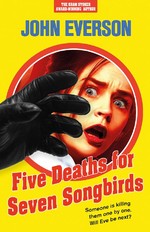 Flame Tree Press / March 2022
Flame Tree Press / March 2022
Review by: Vince A. Liaguno
The literary world has enjoyed a spate of well-received meta-slashers in recent years—from Grady Hendrix’s The Final Girl Support Group and Brian McAuley’s Curse of the Reaper to the undisputed champ of the sub-genre, Stephen Graham Jones, with his The Last Final Girl, Night of the Mannequins, The Babysitter Murders, and his award-winning Indian Lake Trilogy (My Heart Is a Chainsaw, Don’t Fear the Reaper, and the upcoming The Angel of Indian Lake).
Now horror author John Everson takes on the much-revered precursor to the slasher era—the giallo. With his thirteenth novel, Five Deaths for Seven Songbirds, Everson crafts a straightforward homage to the highly-stylized, lurid Italian murder mysteries of the 60s and 70s. In keeping with the archetypal giallo plot, a mysterious, black-gloved psychopathic killer stalks and butchers a series of beautiful women—in this case, student members of a jazz ensemble called The Songbirds. Incoming American transfer student Eve Springer arrives at a renowned Belgium musical conservatory called The Eyrie to study under the esteemed musical virtuoso Professor Ernest Von Klein. After auditioning for the titular group at the urging of Von Klein, Eve finds herself the campus jazz collective’s newest pianist, replacing the star of the school’s piano program who she learns was strangled with a piano wire just days before.
Everson knows his way around the structure of the giallo, layering in all the requisite ingredients—the plodding police detective, an unreliable protagonist, ample red herrings, and a bloody body count. The mystery itself is fleshed out in a suitably flamboyant manner consistent with any Mario Bava, Dario Argento, or Lucio Fulci film entry. Everson’s kills are, again, consistent with the giallo subgenre—outlandishly violent, sexually provocative, and themed (in this case, all the kills revolve around music in some way). One murder involving a silver saxophone is so gag-inducingly gruesome that even seasoned gorehounds will wince. Even the book’s cover—a black-gloved hand reaching for a frightened young woman against a garish yellow backdrop with red title letters—reflects the classic garish aesthetic of the giallo.
What sets Everson’s tackling of the giallo-in-print apart from his literary slasher brethren is that he’s playing it straight—this isn’t some kind of deconstruction of the genre. No clever inside jokes or meta references to the film subgenre it lovingly imitates. No, Everson sticks to the giallo’s cat-and-mouse conventions and gives readers a full-on technicolor nightmare that’s as moody as any cinematic giallo’s prog rock score. It’s a frightfully fun melodramatic murder mystery with the pacing of a sexy thriller.
Purchase Five Deaths for Seven Songbirds by John Everson.
When It Rains / Mark Allen Gunnells
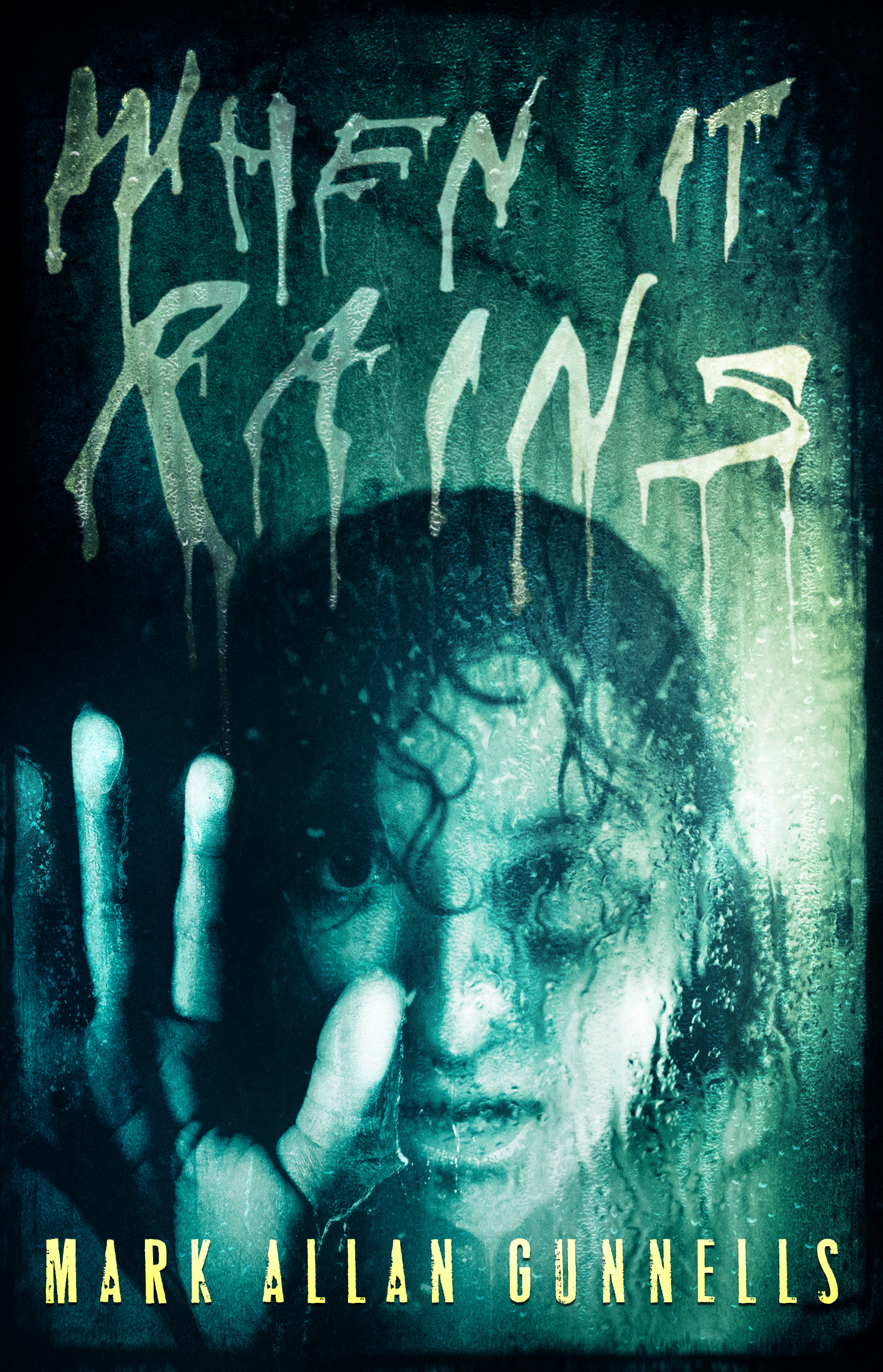 Crystal Lake Publishing / March 2022
Crystal Lake Publishing / March 2022
Reviewed By: Vince A. Liaguno
The novella format has gained popularity in recent years—not quite requiring the commitment of a novel yet allowing the reader to spend time with a tale and its characters a little longer than a short story. Stephen King has made good use of the format over the course of his career, crafting full-length works by pulling together a handful of novellas like he did with Different Seasons (Viking Press, 1982), Four Past Midnight (Viking Press, 1990), Hearts in Atlantis (Scribner, 1999), and If It Bleeds (Scribner, 2020). Likewise, Mark Allen Gunnells has revisited the novella format over the course of his still-burgeoning career with The Summer of Winters (Evil Jester Press, 2013), Fort (Sinister Grin Press, 2015), and the more recent 2B (Valhalla Books, 2021).
Gunnells employs the novella format for his latest, When It Rains, the events of which take place over the course of three hours on the campus of a fictional South Carolina university. It’s the perfect structure for the pacing required and allows Gunnells to move the story along at a brisk clip. When an anomalous downpour of malodorous, gelatinous precipitation begins to fall, various denizens of Friedkin University take sanctuary inside the campus bookstore and café. As the ragtag ensemble watch with growing horror as the rain spreads worldwide, paranoia-filled survivalist instincts kick in and sentiments among the group begin to fracture. With the origins of the weird rainfall an unknown, media reports begin to fuel a growing panic within the bookstore of contagion. Are those who were caught in the rain at risk for some unknown infection —and, more importantly to those who managed to stay dry—is whatever they might have contracted transmissible? It’s this slowly-percolating dilemma that fuels the emotional core of Gunnells’ tale and gives him a wide berth to comment on the self-preserving nature of human beings pushed to the brink during times of uncertainty.
In case the influences on When It Rains aren’t clear from the outset, Gunnells namechecks a few of them for the reader—namely, the famous Twilight Zone episode “The Monsters Are Due on Maple Street” and, most obviously, King’s novella The Mist, first published in 1980’s Dark Forces: New Stories of Suspense and Supernatural Horror before the edited version that appeared in his 1985 collection Skeleton Crew. Like The Mist, Gunnells populates When It Rains with a combination of stock characters (the bookstore employees, the loud-mouthed know-it-all, an elderly couple) and some wholly original characters like Tony and Vincent, a gay couple for whom remorse for an undiscovered infidelity drives a final act of selflessness, or the older closeted professor who takes a student with considerable daddy issues under his proverbial wing in their shared quest to survive.
Gunnells opts for short passages told from the alternating viewpoints of the various characters to propel his narrative forward, a wise choice considering the size of his ensemble and the short window of time over which the events of When It Rains take place. There’s an urgency, a momentum that he’s able to establish from the outset and skillfully maintain throughout the novella. He manages a whopper of a twist during the story’s finale that no reader will see coming and then cleverly adds a thoughtful epilogue that reminds readers of the very human toll this story has taken on its characters.
When It Rains is an excellent reminder of the old adage about good things coming in small packages. Gunnells adroitly presents the central moral dilemma in such a way that the reader both understands and empathizes with the difficult consensus reached while simultaneously reviling those coming to said consensus. Insightfully, Gunnells shows us that humanity and inhumanity lie somewhere along a spectrum and that the sliding scale of our decisions is often fraught with moral ambiguity and lots of gray space in between the extremes.
Purchase When It Rains by Mark Allen Gunnells.
When Things Get Dark / Edited by Ellen Datlow
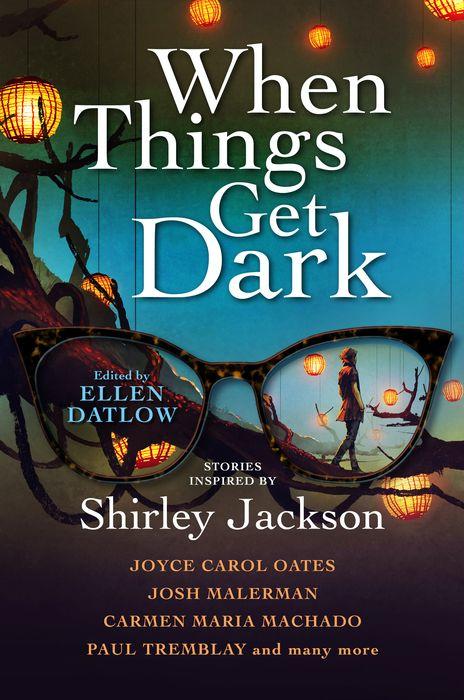 Titan Books / September 2021
Titan Books / September 2021
Reviewed by: Vince A. Liaguno
Crafting a tribute anthology to any established writer is a tall order, one fraught with the potential danger of cheap mimicry. When Things Get Dark, Ellen Datlow’s curation of new Shirley Jackson-inspired original tales, aspires to be more homage to Jackson’s themes versus an attempt to imitate her stylistic literary idiosyncrasies. The 18 stories endeavor to hit a sweet spot between reverential pastiche and modern thematic interpretations of Jackson’s rich catalog of work. Some of the stories in Datlow’s collection capture Jackson’s aesthetic, while others play with the eccentricities present in so much of her fiction.
At the heart of several of the stories Datlow presents in When Things Get Dark are middle-class women of a certain age whose well-established worldviews are particularly vulnerable to the fatalistic forces the contributing writers set upon them. All are women on the brink of some degree of madness. In “A Trip to Paris” by Richard Kadrey, for example, the story’s protagonist—longing for release from the claustrophobic chains of domesticity—has poisoned her family only to have their ghosts revisit her in a most inventive and visible way. Despite her increasingly desperate attempts to banish the ghosts that haunt her, they continue to resurface, thwarting her titular trip—an escape from the small, conservative town and its denizens she sees as her oppressors. Kadrey nails the Jackson influences here with gorgeous lines like:
“I was drowning, and when you’re drowning, you’ll do anything to keep from going under. You can’t blame a drowning victim for simply wanting to live.”
Likewise, M. Rickert’s “Funeral Birds” captures the essence of the quintessential Jackson heroine who is caged by the guilt and obsession over her own circumstances with Lenore, a lonely widow preparing to attend the funeral of a woman for whom she was a professional caregiver. Rickert beautifully depicts that Jackson-esque idea of the respectability of ordinary people juxtaposed against the ugliness of the secrets they hide.
In two of the anthology’s standout stories—Benjamin Percy’s “Hag” and Paul Tremblay’s “The Party”—their creators aim more for Jackson’s creepy aesthetic, permeating their tales with a palpable current of anxiety and paranoia. In the former, Percy presents a folkloric tale of a crime reporter—and her stowaway young daughter—investigating a series of murders and an island cult serving a voracious sea witch who demands sacrificial human victims. A foreboding island inn and spooky seagull totems add to the unnerving atmosphere. Tremblay’s “The Party” calls to mind Jackson’s 1958 novel, The Sundial, with its tale of a lesbian couple attending the younger spouse’s work party. An unsettling party theme, a mysterious, alien-like fruit, and strange partygoers are the vague ingredients Tremblay layers in before leaving the reader to fill in the gaps amidst an escalating sense of “something’s not right here…” They say the best stories leave you wanting more—and Tremblay accomplishes this masterfully.
The three best offerings in When Things Get Dark are more Jackson-adjacent than obvious homage. Genevieve Valentine takes Jackson’s recurrent theme of smart women who find themselves in ill-fated situations they can’t escape and crafts a deceptively simple story in “Sooner or Later, Your Wife Will Drive Home.” Structured as a series of seemingly unrelated vignettes, Valentine explores Jackson’s recurrent theme of women doomed by the promise of independence (in this case, driving automobiles) and reinforces the historical prevalence of violence against women in the #MeToo era. Likewise, Laird Barron shows how the worst predators often walk among us in “Tiptoe.” This subtle story involving a childhood game, photography, and the relationships between fathers and sons is beautifully layered and builds—almost unobservantly to the reader—to a wallop of an ending that still haunts me. Barron’s “Tiptoe” is a masterclass on how to artfully build tension, employing striking lines like:
“Trouble is, old, weathered pictures are ambiguous. You can’t always tell what’s hiding behind the patina. Nothing, or the worst thing imaginable.”
Finally, Kelly Link’s closer, “Skinder’s Veil,” is a triumph of magical realism. The story follows a disheartened grad student who’s having difficulty writing his dissertation—hampered by his own procrastination and an annoying roommate. When he receives an unexpected call from an ex-girlfriend begging him to temporarily assume her sweet housesitting gig in rural Vermont, he sees an opportunity to get away from the roommate and finish his thesis. That’s the set-up; to reveal any more of the plot points would be a disservice to the trippy adventure Link has in store for the reader. Suffice to say that “Skinder’s Veil” is as original as anything you’re likely to read this year.
As in any anthology, there will be stories that stand out, stories that fade quickly from memory, and stories that fail to connect; fortunately, Datlow delivers quite a few standouts here and only one or two that seem out of place. When Things Get Dark encapsulates much of the Shirley Jackson thematic universe—fatalism, fear of abandonment, women on the brink of madness, the duality of architectural symbols. Datlow has assembled a reliable cadre of contributors to carry out the daunting task of blending the Jackson aesthetic with their own distinct styles. The result is an often unsettling collection of top-notch tales that explore the darkest corners of the mundane, teasing out the anxiety, terror, and neurosis from the ordinary that Jackson was a master at conveying in her work.
Purchase When Things Gets Dark, edited by Ellen Datlow, here.
Summer Sons / Lee Mandelo
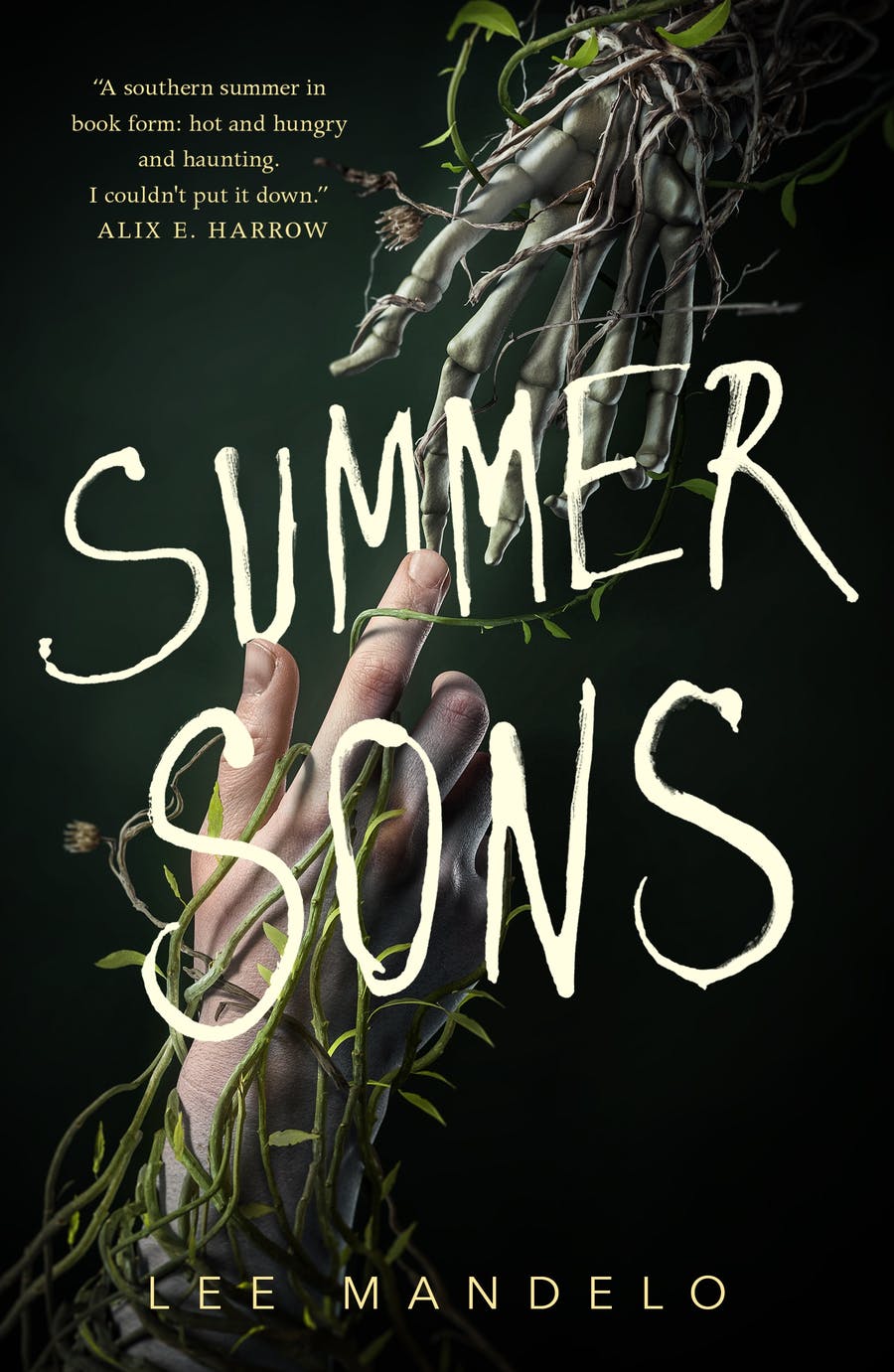 Tordotcom / September 2021
Tordotcom / September 2021
Reviewed by: Vince A. Liaguno
Body horror, car culture, masculinity, and queer yearning are the key ingredients of Summer Sons, Lee Mandelo’s ambitious debut novel. In what’s ultimately a deceptively keen exploration of grief and longing set in Appalachian academia, Summer Sons is part ghost story, part academic intrigue, and part coming of age story saturated with a heavy coat of southern gothic.
As the novel opens, twenty-something Andrew Blur has just arrived at graduate school in Nashville, Tennessee, where he was to join his best friend and adoptive brother, Eddie Fulton. Sadly, Eddie is dead—the victim of an apparent suicide—and Andrew is left to navigate an inheritance that includes Eddie’s fortune, which comes complete with a roommate and circle of hyper-masculine, drag-racing aficionados and sometimes drug dealers, as well as a paranormal research project at Vanderbilt’s graduate program. Oh, and the body-melding specter of his deceased best friend.
As Andrew reluctantly steers through the life Eddie left for him, he becomes convinced that Eddie’s death was no suicide and sets out to uncover the truth. This leads him to delve head-first into his friend’s American Studies graduate research project on Appalachian folklore—a smokescreen, Andrew uncovers, to pursue answers about the cursed Fulton family legacy. Matters are complicated by missing notes and a curiously invested thesis supervisor, as well as Andrew’s reluctant immersion into Eddie’s circle of friends, most notably roommate Riley and his cousin, Sam. In the end, it all comes down to legacy—those we create and those we inherit—and Mandelo masterfully brings their slow-burn of a narrative to a (mostly) satisfying conclusion.
Mandelo gives readers a lot to unpack in Summer Sons; there’s the cutthroat world of academia (here laced with a bit of institutional racism), the fluidity of sexual orientation, and an exploration of masculinity. Mandelo’s examination of the latter borders on the fetishistic, with a hyper-awareness of their male character’s bodies that enriches the book’s atmosphere of humidity and sultriness. The effect can be both unsettling and rousing, at times lending itself to a queer fever dream. Summer Sons really shines in its juxtaposition of the old-money elitism of its academic setting against the rural Appalachian elements. The contradiction of these two worlds mirrors those of Andrew, who’s trying to navigate both through the fog of the grief process.
With Summer Sons, Lee Mandelo has crafted a horror novel that builds—admittedly, frustratingly slow at first—to an affecting and thought-provoking conclusion. Patient readers will be rewarded ten-fold for sticking with Andrew through his early meandering. Mandelo recompenses handsomely with beautifully wrought relationships that seem to grow organically off the page, an escalating sense of tension that—once it kicks in—propels the narrative at high-octane speed, and a fully realized tale with just enough room to leave you thinking about the characters and their futures long after you close the book.
Purchase Summer Sons by Lee Mandelo here.
Good Neighbors / Sarah Langan
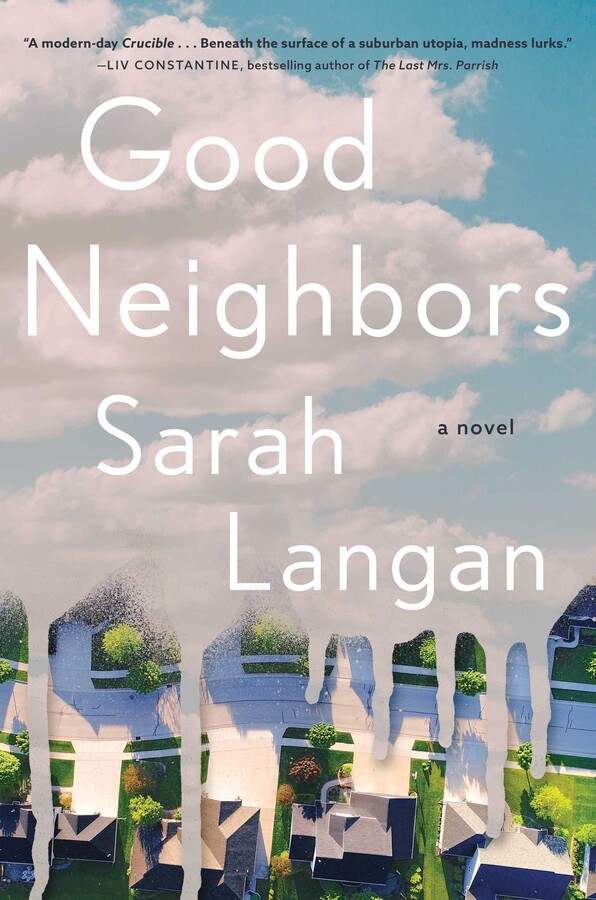 Atria Books / February 2021
Atria Books / February 2021
Reviewed By: Vince A. Liaguno
British writer and physicist C.P. Snow posited in his final novel A Coat of Varnish (1979) that “civilization is hideously fragile and there's not much between us and the horrors underneath, just about a coat of varnish.” Sarah Langan’s new novel Good Neighbors—her first since 2009’s Audrey’s Door—lends credence to Snow’s assertion in this striking exploration of the psyche of the modern American suburb. Part psychological thriller, part eco-horror, part scathing deconstruction of middle-class suburbia, Good Neighbors is relentlessly tense and savagely grim in its depiction of the suburban façade. It also marks the welcome return of one of fiction’s most insightful and engaging voices.
Maple Street, an idyllic, crescent-shaped enclave on Long Island, presents to the casual observer as the epitome of suburban precision. The lawns are well-manicured, the houses well-maintained, and the denizens themselves a smattering of acceptable middle-class diversity. Everyone smiles and waves and exchanges sidewalk pleasantries. It’s not until the Wilde family moves in—tattooed ex-rocker Arlo, his ex-beauty queen wife, Gertie, their fractious teenage daughter Julia, and younger son, Larry, whose verbal tics and idiosyncratic behavior bespeak his place somewhere on the autism spectrum—that the cracks of this cloistered community begin to show, literally and metaphorically.
The Wildes personify the metaphorical crack on Maple Street. They represent a rung on the social ladder lower than the rest of the residents, and that doesn’t sit well with college professor and queen bee of Maple Street, Rhea Schroeder, whose passive-aggressive machinations preserve the neighborhood’s carefully constructed veneer. At first, Rhea takes the savior tact with the Wildes—and Gertie, in particular. In pulling Gertie closer, Rhea can appear magnanimous while reinforcing how much better, how much more seemingly put together she is than her lower-class counterpart. But as anyone who’s either lived in such a neighborhood or seen The Stepford Wives knows, artifice does not make the sturdiest of foundations. It isn’t long before an incidental drunken confession over cocktails on Rhea’s front porch and a gaping sinkhole that opens up in the neighborhood’s equally idyllic park across the street sets the stage for the unraveling of Maple Street’s meticulously cultivated exterior.
When tragedy strikes, the inhabitants of Maple Street devolve into paranoia and ugliness. Langan shines as she juxtaposes the environmental toxins of the sinkhole against the toxicity of neighborhood gossip and innuendo. As the sinkhole widens and noxious sludge oozes and spreads, so too do the poisonous rumors that pit neighbor against neighbor. Langan expertly builds the tension, and then ratchets it up, until finally letting the lid blow off her literary pot.
Langan’s literary roots are firmly rooted in the horror genre and, although she’s segued after a decade-plus absence into something resembling more of a suspense-thriller with a dash of literary fiction with Good Neighbors, it’s nice to see some of those roots still showing. While the monsters here may not resemble the supernatural terrors at work in her earlier novels like The Keeper or its Bram Stoker Award-winning sequel The Missing, they’re no less terrifying—perhaps even more so because we can recognize and relate to them. If the scariest monsters are indeed those that take human form, Langan gives us a cul-de-sac full of them. Langan does continue down the path taken with her first two books in presenting climate change as an insidious agent of horror, here taking the form of the fissure that opens and swallows at least one of the novel’s characters and serves as the catalyst for the undoing of others. Environmental collapse as the conduit to the collapse of civility—and civilization itself—is a timely and compelling theme that one hopes Langan continues to explore in future works.
Purchase Good Neighbors by Sarah Langan here.
My Heart Is a Chainsaw / Stephen Graham Jones
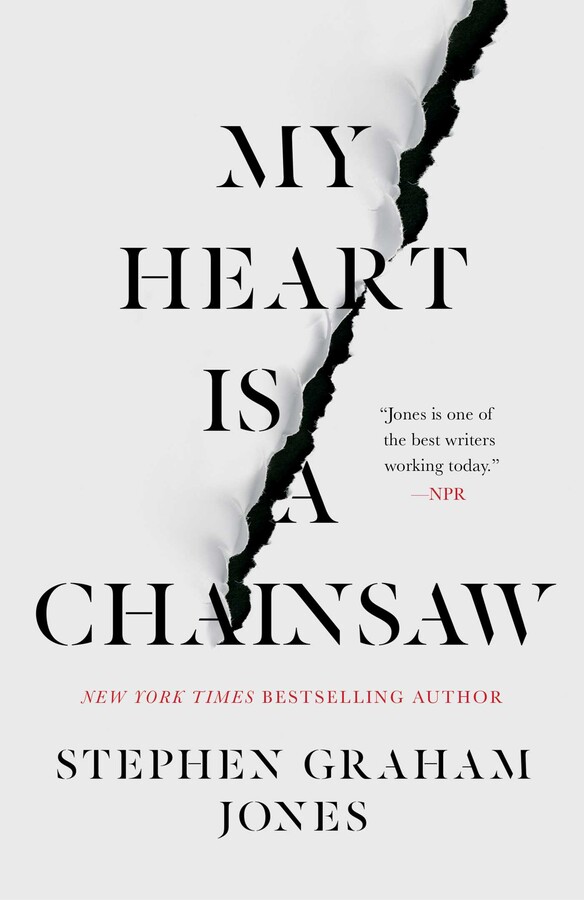 Saga Press / August 2021
Saga Press / August 2021
Reviewed By: Vince A. Liaguno
All roads lead to somewhere, and if you’ve traveled the Stephen Graham Jones literary highway for as long as this reviewer has, you’ll know that My Heart Is a Chainsaw, the Bram Stoker Award® winner’s latest, has been the destination all along. From his earliest meta-filled works like Demon Theory to his literary flirtations with the often scoffed-at horror subgenre he unapologetically loves like The Night of the Mannequins and The Last Final Girl, Jones finally brings both his adoration and encyclopedic knowledge of the slasher genre full circle. My Heart Is a Chainsaw is but the first of many pinnacles in a career that’s just finally beginning to get the mainstream attention and accolades it so richly deserves.
Jade Daniels, the novel’s exceedingly flawed but lovable protagonist, is the quintessential high school outcast. Living in the economically-depressed Idahoan town of Proofrock, Jade is the product of an absent mother and abusive, alcoholic Indigenous father, which renders her a survivor from the start. More at home with her beat-up VCR and stash of beloved 80s-era slasher films than people, Jade views her daily life in Proofrock through a kaleidoscope of slasher movie reference points. The banality of her life is punctuated by a dead-end custodian job at the high school from which she’s kinda-sorta just graduated and her frequent run-ins with the town’s sheriff. Only when a new luxury community called Terra Nova begins to go up on the other side of the town’s aptly-named Indian Lake—here the stand-in for the railroad tracks that usually separate the haves from the have-nots—does Jade’s predicted life course take a detour.
When two Dutch tourists are killed in grisly fashion on Indian Lake, Jade recognizes what no one else does—or even can: A new slasher cycle has commenced. Through the lens of her exhaustive knowledge of the slasher genre, Jade predicts and tries to warn of what’s to come. Trouble is no one’s listening to the notoriously troubled town rebel at the outset. Eventually, Jade convinces Letha Mondragon, daughter of one of Terra Nova’s founding gentrificationists, that not only has a slasher come to Proofrock but that she’s identified Letha as the archetypal final girl in this real-life narrative.
Although the plot takes all the requisite twists and turns leading up to the anticipated unleashing of the promised slasher mayhem, Jones uses his expertise and familiarity with the genre to brilliantly deviate from what’s expected, giving readers both a sly subversion and brilliant deconstruction of the genre in the process. Even amidst a hefty body count, Jones finds and elevates the humanity of the story through Jade, who is the composite of every final girl we’ve ever encountered in one of these films. He celebrates her resiliency and crafts a transformation that feels authentic and every bit deserved.
Jones wears his love of the slasher movie on his sleeve—make that both sleeves—in My Heart Is a Chainsaw. From the slasher-named chapters to a series of cleverly placed essays on films and tropes of the genre that masquerade as the extra credit history papers Jade needs to graduate, Jones paints the pages of Chainsaw a bright slasher red. And while there’s a cool in-crowd vibe to this generous layering of Easter eggs for his slasher brethren, Jones wisely crafts a compelling narrative that doesn’t exclude even the most casual of readers who perhaps aren’t as familiar with the novel’s slasher leanings. Still, Chainsaw is less a meta-deconstruction of the genre than it is a self-referential submersion into it. In other words, readers aren’t one of the partygoers listening to Randy’s dissertation on the rules for surviving a horror movie in Wes Craven’s Scream; they’re a character in the virtual reality of the movie itself, learning the rules as they run, scream, and try to hide from the maniacal killer. Like Jade, they’re trying to stay one step ahead—only to have the rug pulled out from under them again and again. Ultimately, knowledge is survival.
Layered in among the carnage, Jones seamlessly weaves a broader social commentary on the insidiousness of colonialism, gentrification, and environmental destruction into his narrative, saving some of his harshest criticism—here doled out in the form of bloody slaughter with everything from machetes to nail guns—for the arrogance of capitalism and the microaggressiveness of entitlement. In the hands of a lesser writer, injecting this type of weighty subject matter into a thriller plot could spell a pacing disaster; thankfully, Jones lands his punches and blackens a few eyes without knocking anyone out in the process.
Part homage to a beloved film genre, part coming-of-age story, My Heart Is a Chainsaw is Stephen Graham Jones at his most accomplished. With a finely-cultivated distinctiveness in voice, Jones cements his reputation as a master storyteller. It’s a triumphant novel of breakneck pacing and ingenious construction told through the eyes of a damaged heroine who finds solace—and, ultimately, salvation—in the same films that bring so many of us of a certain age a reassuring sense of nostalgic comfort. While the violence inherent in the slasher film may be an odd choice from which to derive such sense of redemption and wellbeing, Jones knows it so intimately that he’s able to simultaneously convey and dispel its illogic as a therapeutic agent of healing, proving himself a literary virtuoso.
Purchase My Heart Is a Chainsaw by Stephen Graham Jones here.
The Man from Milwaukee / Rick R. Reed
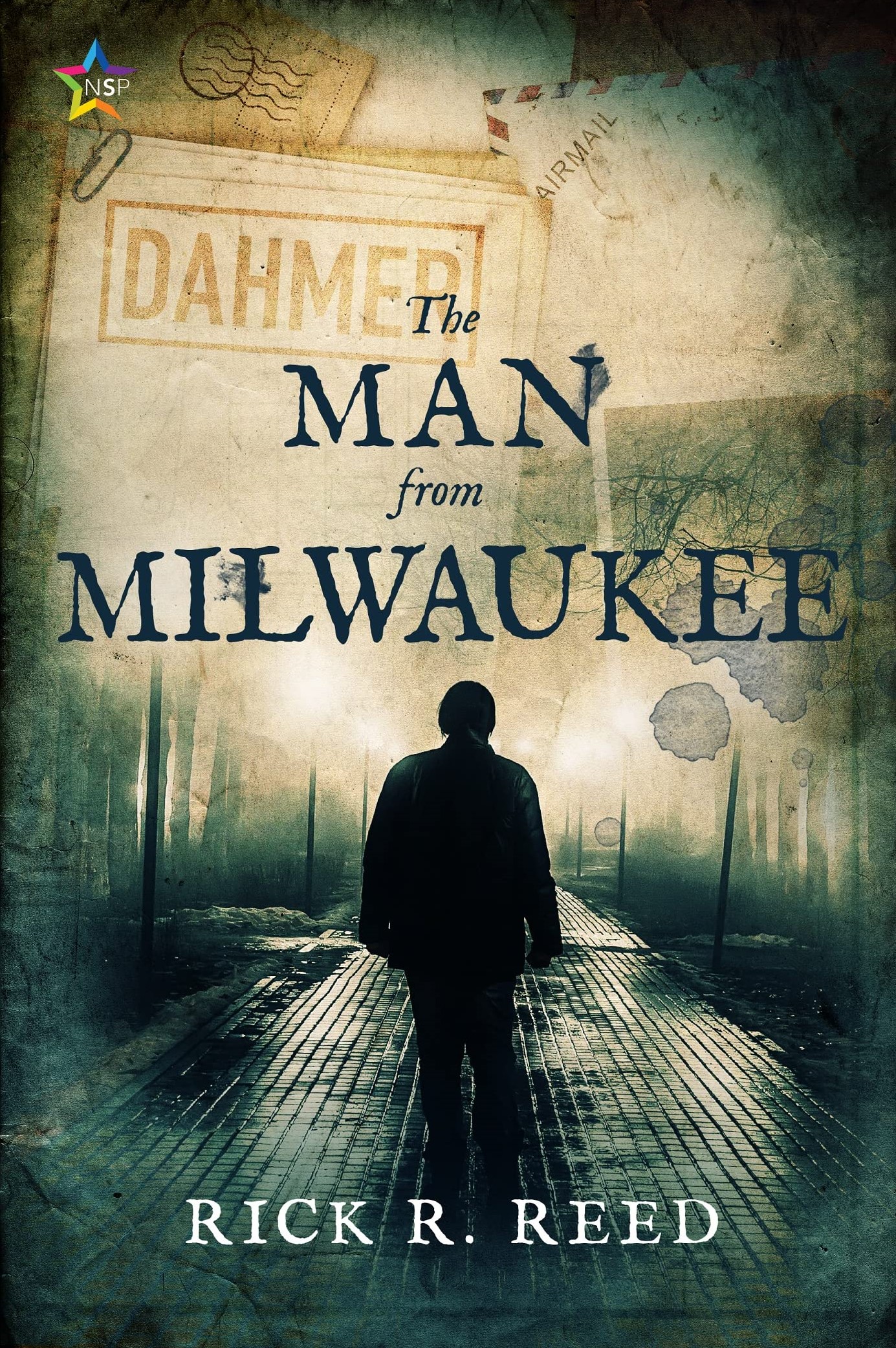 NineStar Press / July 2020
NineStar Press / July 2020
Reviewed By: Vince A. Liaguno
Rick R. Reed returns to his horror roots with The Man from Milwaukee, a surprisingly fresh thriller about obsession, trauma, and—ultimately—the redemption of forgiveness. It’s 1991 and notorious serial killer and cannibal Jeffrey Dahmer has just been apprehended by authorities. Chicagoan Emory Hughes, a glum, closeted gay man working a dead-on job at an insurance company, becomes fascinated by the news reports of Dahmer’s crime spree. Amidst a truly cheerless life that includes caring for his bedbound, AIDS-stricken mother and struggling through a strained relationship with his recalcitrant sister, Emory’s fascination turns into an obsession that manifests in a macabre pen pal relationship with Dahmer in prison. When an openly gay younger man named Tyler Kay comes to work at the insurance company and strikes up a relationship with the introverted Emory, the older man is forced to confront his inner demons, with deadly consequences.
Reed gets major props for taking The Man from Milwaukee in unexpected directions several times throughout the novel. In the hands of a lesser writer, any story about a sexually repressed gay man obsessed with Jeffrey Dahmer would play out in predictable and gruesome ways. But Reed, a veteran of multiple genres, shrewdly layers in some interesting twists and turns—and when you think the story is going left, he unexpectedly banks right. He fashions his novel more of a character study of Emory and, not unlike Stephen King did with Annie Wilkes in Misery, imbues his villain with humanity. In the process, he manages a feat not many writers can pull off: He makes Emory a genuinely sympathetic villain. While readers are rooting for a good outcome for Tyler, they’re also hoping that Emory gets some redemption by story’s end.
With The Man from Milwaukee, Reed never sacrifices tension or that pervasive sense of dread. Bad things happen in this book, which leads readers to believe that characters—especially Tyler—are in grave danger. But where other thrillers increasingly accelerate from 0 to 60 mph and follow the highway straight to the cliff’s edge and over, Reed isn’t afraid to take his foot off the gas at unexpected places in his narrative or turn down a side road on occasion. It a narrative device that makes for a less conventional reading experience, keeping readers just enough off balance without throwing them for the total loop.
Secondary characters are used judiciously, never clogging up Reed’s straightforward plot, which has Tyler on a collision course with Emory’s descent into madness. Emory’s sister, Mary Helen, figures more prominently in the novel’s third act, and her character arc is one of the many pleasant and unpredictable joys of this otherwise dark work of fiction. At story’s end, the characters who make it through grapple with the cost of trauma, the toll of loneliness, and the price of forgiveness. It’s here where Reed brings his well-paced, engrossing tale to yet one last surprising turn in the narrative road, one certain to leave readers thinking about The Man from Milwaukee for days after closing the book.
Purchase The Man from Milwaukee by Rick R. Reed here.




